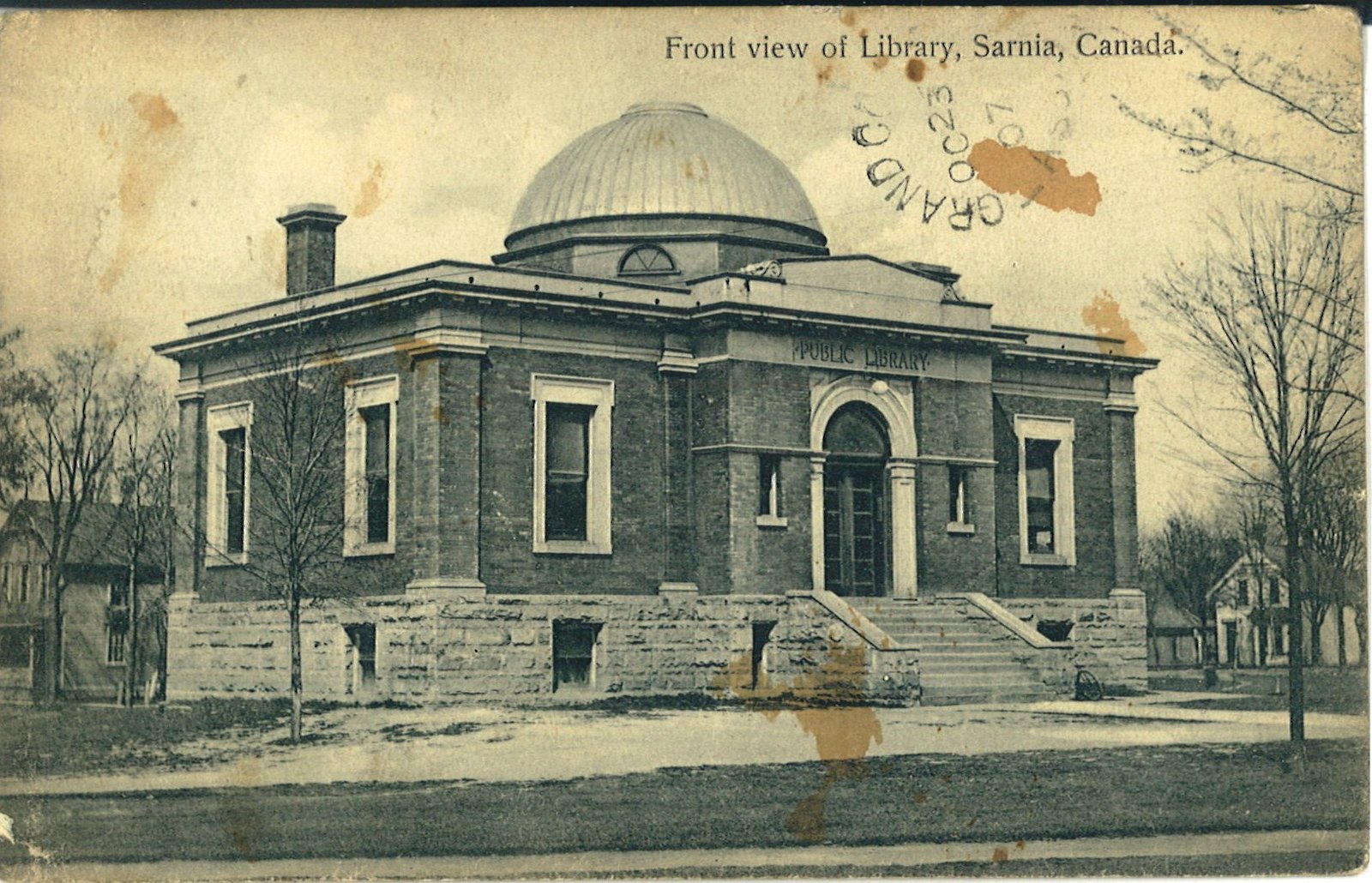By Phil Egan
Few areas of Sarnia have changed as much over the years as Ferry Dock Hill. For much of its existence, this was the busiest place in town.
Most of Port Sarnia’s earliest settlers arrived by boat. As late as 1846 there were fewer than 500 citizens in the community, which was surrounded by forest and swampland. The river was the critical highway.
Across the St. Clair River, Fort Gratiot had been established in 1814, and the Port Huron community was larger than Sarnia in its early days. Ferries ran regularly from the late 1830s. The earliest ferry was a sailboat in 1836. This was followed by mule and horse-powered canoes and scows, paddle-wheelers and steamers.
Port Sarnia was also an important shipping centre, becoming a customs port of entry in 1840. Richard Emeric Vidal, one of three founders of Sarnia,was named the first collector of customs in 1846. During the 1840s and 1850s, Ferry Dock Hill was surrounded by a forest of masts rising above the schooners waiting to load or unload cargoes of wheat, potash, wool, wooden staves, railway ties, salt, cordwood, shingles, furs, coal and iron ore.
Residents of Port Sarnia in the early 1850s were still isolated from the rest of Canada West. Newspapers from Toronto arrived two days after they had been printed. Travel beyond London was an even greater inconvenience.
That all changed on December 27, 1858 when a locomotive, a tender, a baggage car and three passenger cars loaded with visitors from London rolled into Sarnia’s new station at the foot of Cromwell Street. Sarnia was now connected to other frontier railway lines at Komoka to Niagara Falls and Windsor, as well as to Toronto and Hamilton. Ferry Dock Hill became the community’s transportation hub, with the rail service now the engine of the settlement’s growth.
In the 1870s, Ferry Dock Hill became the port of embarkation and rail connections to Great Lakes passenger steamers. This began with the Beatty Line. The United Empire, built at Sarnia in 1882, and the Monarch in 1888 were large steamers that enabled considerable immigrant traffic to the West. In1900, the Northern Navigation Company served Great Lakes cruise passengers, especially on its ships Hamonic and Noronic.
Ferry business expanded considerably in 1921when the ferries began to carry automobiles. These ferries could carry 35 cars and 500 passengers. On holiday weekends, cars would be lined up from Cromwell Street, north along Front Street to London Road, and east on London Road as far as East Street, waiting to access Ferry Dock Hill. On Labour Day weekend in 1929, some 10,000 vehicles made the crossing to Port Huron.
In 1891, Ferry Dock Hill’s significance as n international crossing point was reduced by two developments. The opening of the St. Clair River Tunnel that year became the new focus of freight and passenger traffic, and the rail station was relocated. Then, in 1938, the Blue Water Bridge opened between Sarnia, Ontario and Port Huron, Michigan.
In 1946, a Sarnia ferry company began a cross-river passenger service with two converted landing barges. One was named the City of Sarnia and the other the City of Port Huron. In their peak year of operation, 1953, the two of them carried about half a million people. These ferries ceased operation in 1957.
Four years earlier, on May 21, 1953, a powerful and destructive tornado crossed the St. Clair River from Port Huron at this location. It climbed Ferry Dock Hill and ravaged much of downtown Sarnia.
Through both a bustling and an occasionally stormy past, Ferry Dock Hill has been historically vital.


